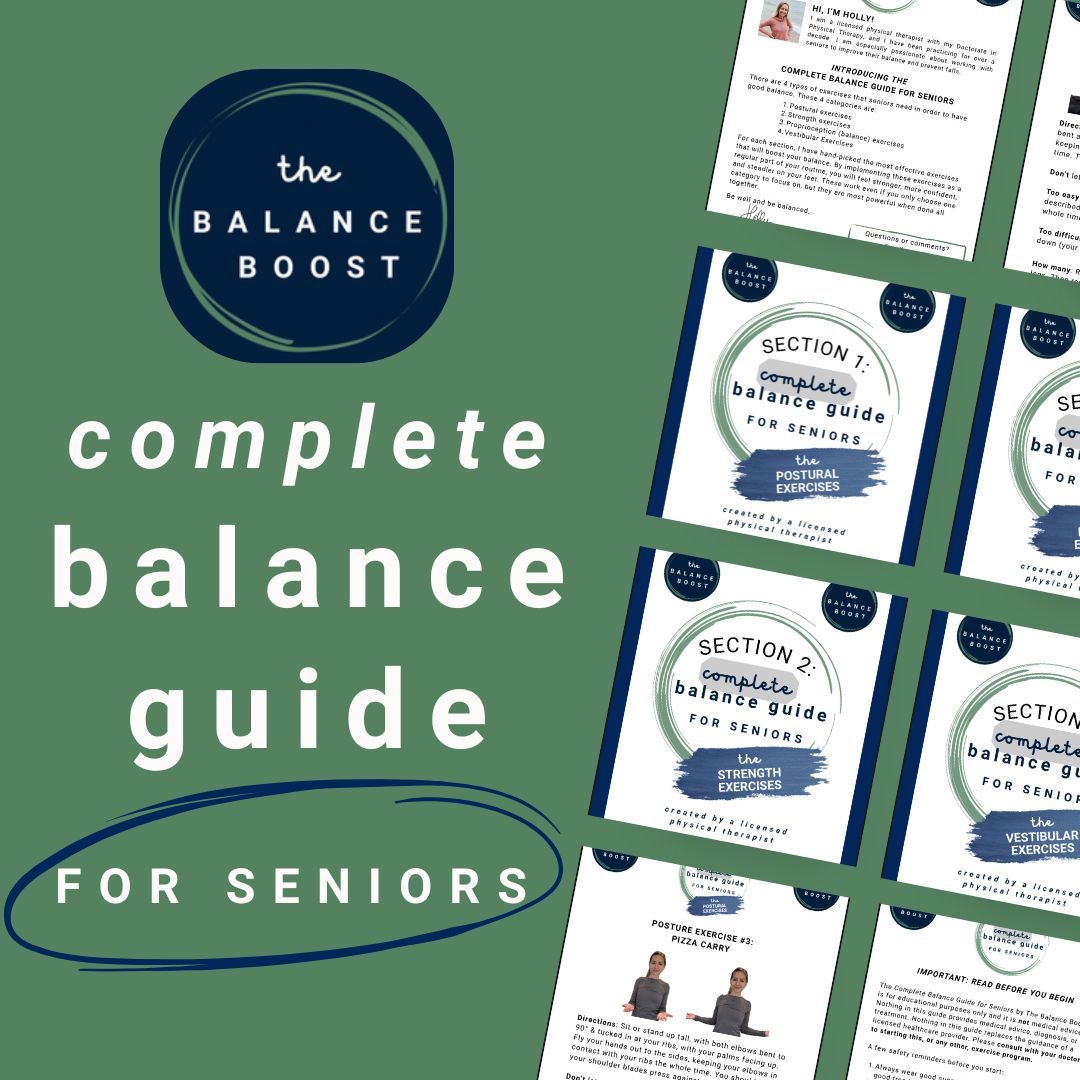Can You Be TOO Concerned About Falling?
May 21, 2025
In short... yes.
Did you know that being concerned about falling, or feeling fearful of falling, actually puts you at a higher risk of falling?!
Being fearful of falling isn’t the same as having a healthy “awareness,” nor is it referring to a phobia. It’s more describing a feeling of concern about falling, or worrying that you will fall. It likely stems from your body feeling unsteady or unsafe during your day-to-day life. It’s also a clear sign that you should start to actively work on your balance and your strength, if you haven’t already!
Being overly concerned with, or fearful of, falling has been shown to lead to physical, functional, psychological, and social changes compared to those who are not fearful of falling. According to this systematic review, being fearful of falling is associated with ALL of the following:
-
Decreased physical activity levels and decreased physical health
-
Problems with balance and gait (walking ability)
-
Cutting down or avoidance of physical activities
-
Reduction in social activities
-
Loss of functional independence
-
Increased depression
-
Decreased quality of life
The research proves that the severity level is important: the severity level of our concern of falling. In order to determine your level, in healthcare we use a set of questions called the Falls Efficacy Scale - International “FES-I” which categorizes you into low concern, moderate concern, and high concern of falling.
The FES-I is a well-researched questionnaire that gives you a score, and that score places you into one of the three tiers of concern. You can either click this link to print the questionnaire to fill out; or, you can grab a piece of paper and write down your answers to the 16 questions: 
FES-I table from https://documents.manchester.ac.uk/display.aspx?DocID=38565
Now add up your total score from all 16 questions, and look to see which category your score falls under:
Total score 16-19: low concern of falling
Total score 20-27: moderate concern of falling
Total score 28-64: high concern of falling
Simply put, the higher your score on the FES-I, the higher your risk for: balance and walking problems, decreased physical health, losing your functional independence, and decreased quality of life.
This score isn’t the end-all-be-all, of course. It’s just another tool that helps us physical therapists put together the full picture of our patient when we are assessing their overall health and fall risk. You can use it as another data point to reassess yourself in the future, maybe in 3 months or 6 months, to see if your score has changed, and if so, if it is trending in a better or worse direction. If your score falls in the moderate or high concern categories, use this as a simple sign to start making changes in your strength, balance, and overall health.
If you aren’t sure where to begin, or if you are interested in taking just a small baby step towards better balance, I have 4 great starting points for you that won’t take a whole lot of time or effort, so they can be perfect for building some confidence and momentum:
1. Fall Proof Your Home in 10 Steps: use my free checklist to efficiently ensure your living space is safe to help prevent falls for you and your loved ones at home - get started today by clicking here
2. Test your level of concern for falling by taking the FES-I questionnaire above (maybe you’ve already done this one, great work!) If you haven't, you can do it now by clicking here
3. Test your functional strength and balance using the quick & easy 5 Time Sit-To-Stand Test (5TSTS) by clicking here
4. Test your walking speed by clicking here
These are 4 great initial steps to take, because they address any environmental risks around your home to help prevent falls, and they also give you 3 clear-cut data points on yourself (your fear of falling score, your 5TSTS score, and your walking speed). This data can be very helpful in identifying your risk, especially when considered all together. If your numbers aren’t where they should be, this can be a helpful jolt to help to motivate you towards the more active solutions, including:
-
My Top 3 Balance-Building Exercises: If I had to choose just 3 exercises for anyone to make the most effective run at building your balance, well, these are the 3 I'd choose! Click here to get the free and simple exercises with instructions now.
-
6 Weeks to Steady Challenge: For those that not only want to be told exactly what exercises to do, but also be given a clear and simple plan for doing them and keeping them accountable along the way, this challenge is for you! Click here to join for free and see what a difference just 6 weeks can make in your life!
-
Scheduling a visit with your healthcare provider to determine next steps. This can be your family doctor who can fully assess if there is anything impacting your balance and fall risk medically. It can also be (and of course, I would strongly recommend) a physical therapy evaluation. A physical therapist can formally assess your strength and balance, and create a custom plan to get you back on your feet.
Never miss a post!
Join our community of seniors looking to age gracefully and keep movin' & groovin' !
All things balance (and zero spam) delivered to your inbox
I won't send spam. Unsubscribe anytime. Terms & Conditions apply.


